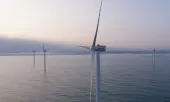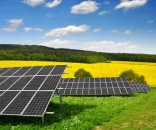
Here's how financiers jump hurdles in funding Asia's power projects
Risks are still prevalent, but experts are finding ways to curb them with the help of governments, investment regimes, and flexible thinking.
When a financier sets out to find power plants to fund in the Asia Pacific, it could run into regulatory and logistical challenges as well as risks from competing banks and other entities. However, experts can still find excitable opportunities since Asia’s power potential is largely untapped.
China’s financing game
Some — but not all — Chinese financings are game changers for the power industry in the sense that they are "throwing money in generous terms," said David Platt, partner at Pinsent Masons, at the conference session “Financing in Asia” for Power-Gen Asia 2018 in Jakarta, Indonesia.
However, Platt argued that China currently has massive loans, long tenor, and no defined risk analysis. This plays into its continued financing for coal. “Chinese banks will go where others won't... will finance coal... but will charge commercial rates and will look for risk mitigation,” he added.
Moreover, if the project has a Chinese sponsor or contractor, the country will give them a push to be a contractor that has a long-term role, either as an investor or operator or both. Banks also look to Sinosure, government, sponsors, and land to shield themselves from risks. Big Chinese banks do not commit to bid deals, Platt added.
Platt was asked whether there are differences in financing between projects covered and not covered by the One Belt One Road initiative. He responded that there is no difference and that he “has no idea what OBOR is” and only knows that it is "unbelievably painful and horrible to everyone involved."
Funding in emerging markets
Whilst China is still able to inject loads of money into its power plants, the rest of emerging markets in Asia are filled with blockages that prevent developers from accessing investments or loans themselves.
Ted Low, director of origination & structuring at Clifford Capital, identified five risks for emerging markets, namely: offtake risk, currency risk, regulatory risk, jurisdictional risk, and political risk. However, the 225MW CCGT power project in Myanmar by Sembcorp Myingyan Power Company could serve as a pathfinder project for future foreign investments in the country.
The project is considered the first international-standard IPP tender in an unrated “frontier” project finance market such as Myanmar with an unprecedented financing tenor. It was funded through fixed/floating rate loans from institutions, senior lenders, as well as Clifford Capital.
Low said the key success factors that helped realise the project included an international standard tender, a bankable set of project documents (contractual framework was familiar to investors in the region), a reputable sponsor such as Sembcorp Utilities and EPC contractors.
The project was also able to mitigate key risks such as the availability-based USD tariff. The government also agreed to bear the fuel supply risks. Transmission facilities were also independently constructed by the project company.
According to Low, thanks to this project, key considerations could be made for financing projects in Myanmar including a bankable contractual risk allocation, land and/or other enabling ancillary infrastructure to be made available by the government, a USD-linked tariff to facilitate USD financing whilst local financing market is developing, the stability of regimes for FDI, and public and private partnerships.













 Advertise
Advertise











